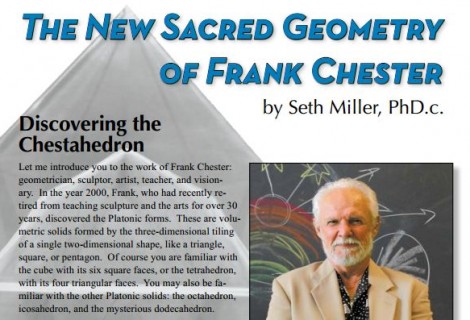An Esoteric Guide to Spencer Brown’s Laws of Form #2
« Previous Page | 1 2 3 4 | View All | Next Page »
To recap: we are in a position where we recognize that the mark, the first distinction, cannot be simple. It cannot mark itself only as a mark, or only as a value. It must somehow be able to mark itself and its value simultaneously without requiring an infinite number of further marks to mark that distinction. It must be able to, in a single stroke, include the possibility for endless variation without itself requiring endlessness for it to begin. The universe is; it has come to be; the mark is made, and made again, and again…
Now, the key is to recognize that the key to the treasure is the treasure. The confusion (between the mark and its value) that has arisen needs to be de-fused, and re-fused, in a new way. What needs to be de-fused is actually manifest in things we have already run across: it showed up in the distinction between the capacity to see and what is seen, between form and content, and yes, between the mark and its value. What connects these examples is itself a form, but it is also a content, and yes, the content of the form is the form, but it is a particular form; it is complex, and it is recursive, and it is the nature of the complex recursivity that distinguishes it from “mere” distinction.
Let me be clear by saying that there is no real problem with GSB’s Laws of Form; there is, however, a problem because of the way that the form is taken. This is something GSB is very sensitive to, and which he discusses in the Esalen conference (session one): we must interpret the form, but the form is not boundable by interpretation. We can interpret it any way we wish, but (as we have seen) this does not mean all interpretations have the same value, or are therefore valueless. The whole key is to recognize the difference between the form and its interpretation, because this is exactly the form, it is the key.
We can say: the form is that form whose content is the form.
This would be more exact, but it is likely not helpful, even at this point where it might be approaching some semblance of sensibility.
Let us rather say: the first distinction, which must be a distinction, must distinguish itself as the distinction between its form and its content. We can see that there are two levels at work in this form. There is the level at which the activity of the distinction is occurring, and there is the level at which the content is distinguished by that activity. We can call the level of the content level N, and the level of the activity N+1. We could also call it N-1, both are equally appropriate. The point is that the first distinction has this strange feature: it distinguishes a boundary between form and content, between the activity of distinguishing and what is distinguished, and it crosses that boundary as a part of its activity.
This is to say, the first distinction is that which distinguishes activity and content, but which does not merely distinguish them: it bridges them. The confusion pointed out by Glanville is completely valid, but it is resolvable… that is to say, it is capable of dissolution and resolution. The way to do this involves distinguishing the level of form from the level of content, and recognizing that a recursion between these levels is the form. It is a complex unity. It is not simply distinction of distinction, at least considered in the way that such a phrase is most likely to be read. Rather, it is distinction of distinction, but in the way in which the first instance of distinction exemplifies the level of activity and the second instance of distinction exemplifies the level of content. This should now be quite clear: the first distinction must be of distinction, but this must be considered as a complex, recursive creation and simultaneous crossing of a boundary that is just precisely the boundary between that very activity of its creation and the fact of it as created.
« Previous Page | 1 2 3 4 | View All | Next Page »






amazing…like you! thank you for sharing
Seth, this is so cool! Thanks for sharing it with us…..